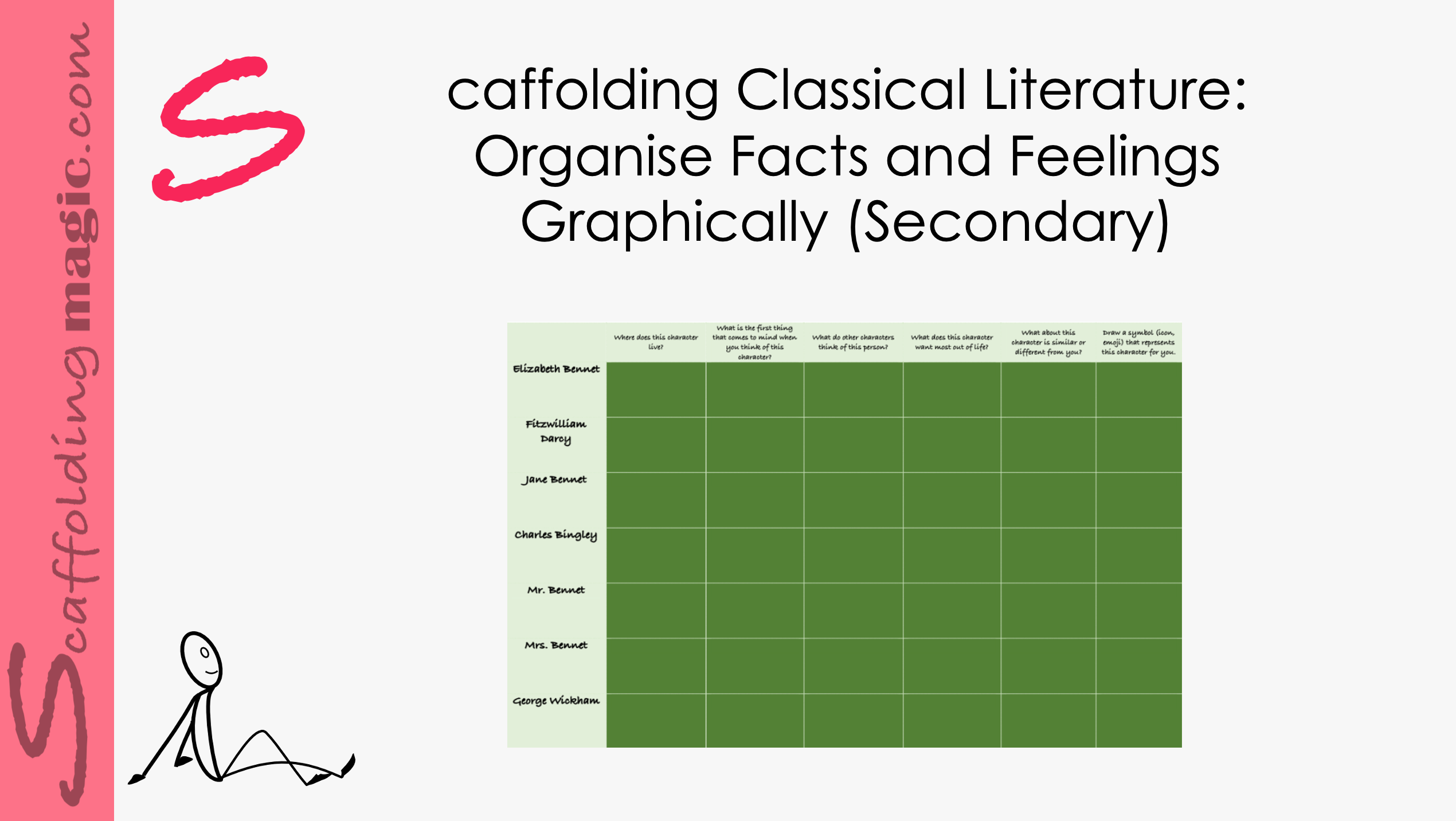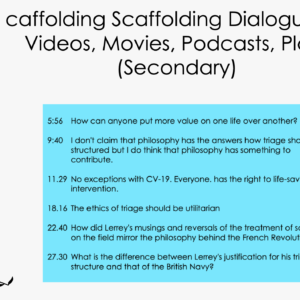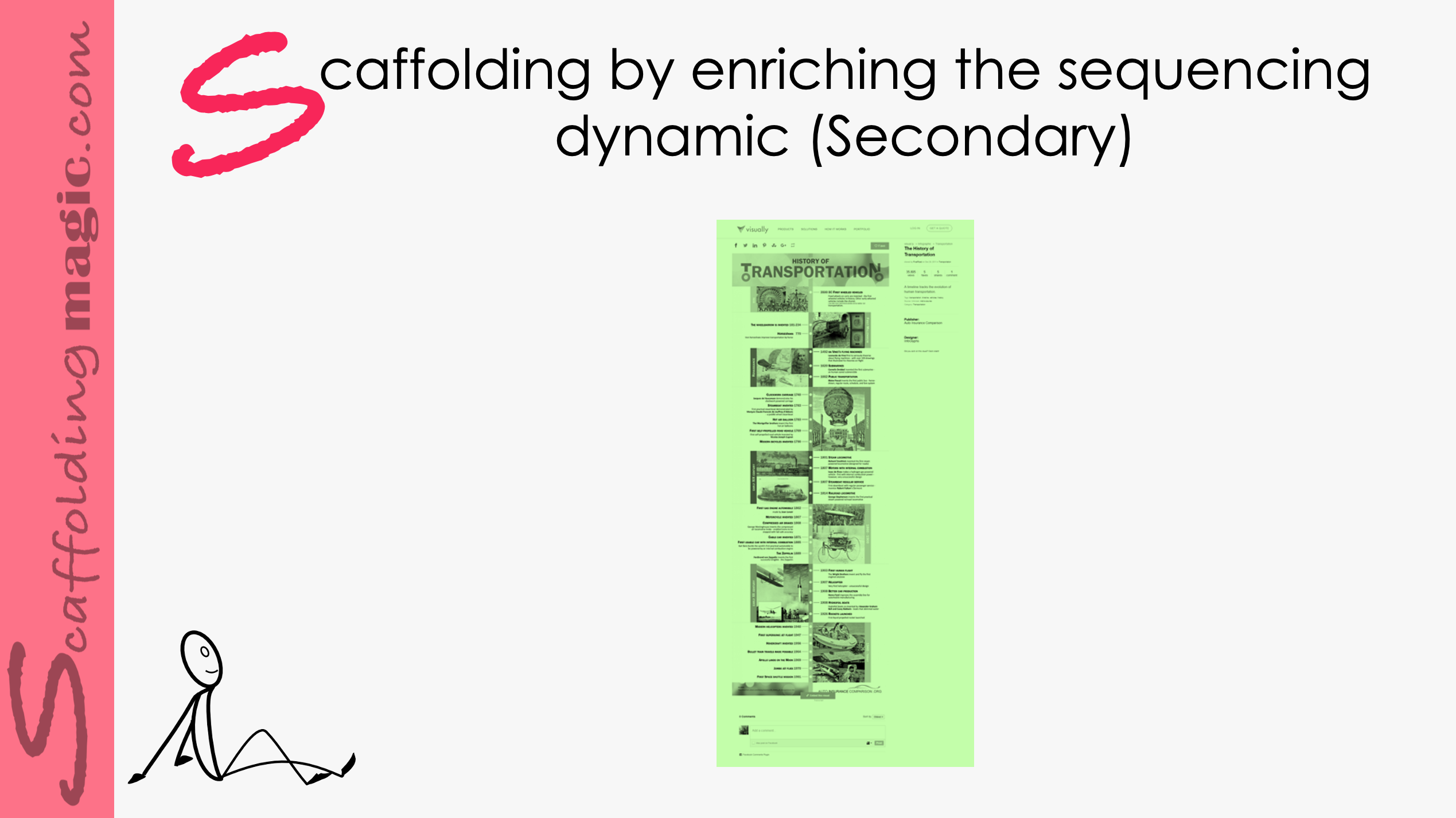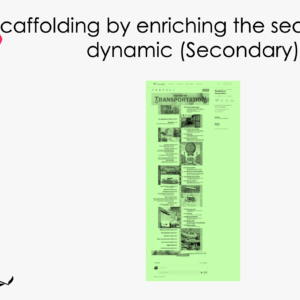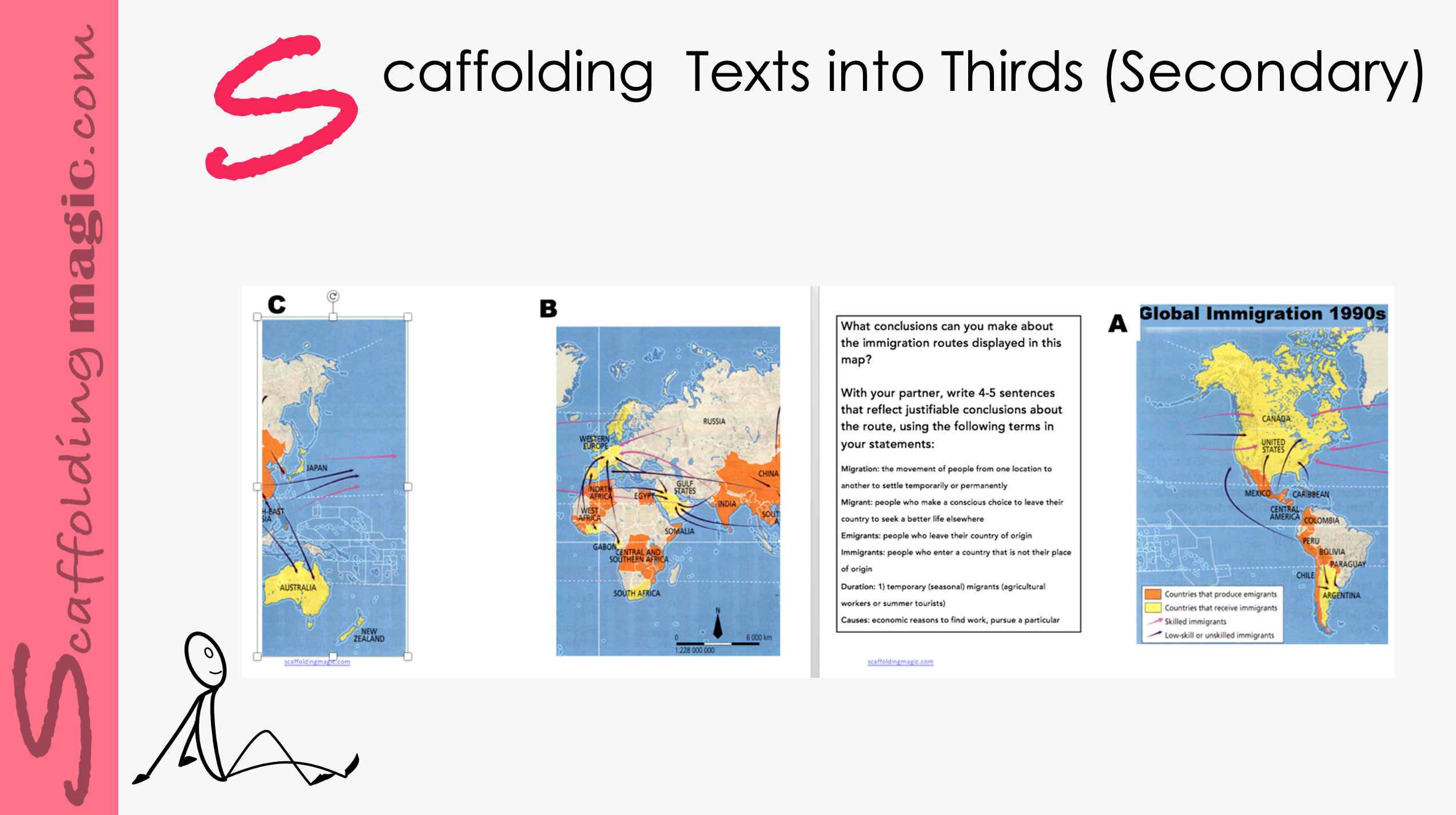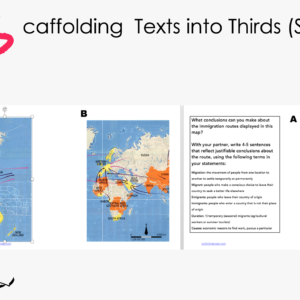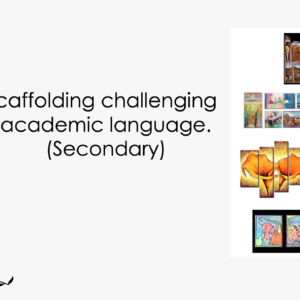Here is a scaffold that will help your students keep track of the many characters in the story. Aside from the facts and family trees which can help enormously in following the plot, the graph encourages the students to pay attention to personalities and actions so they can make connections to them and people in their own lives – a key in engaging our students.
Scaffolding Activity for Classic Literature 4: Organise Facts and Feelings Graphically
$5.00
Here is a scaffold that will help your students keep track of the many characters in the story. Aside from the facts and family trees which can help enormously in following the plot, the graph encourages the students to pay attention to personalities and actions so they can make connections to them and people in their own lives – a key in engaging our students.
Related products
-
Secondary ScaffoldsQuick View
Scaffolding Dialogue for Videos, Movies, Podcasts, Plays (Secondary)
$5.00 Add to cartRated 0 out of 5 -
Secondary ScaffoldsQuick View
Scaffolding by Enriching the Sequencing Dynamic (Secondary)
$5.00 Add to cartRated 0 out of 5 - Quick View
-
Secondary ScaffoldsQuick View
Scaffolding Challenging Terms and Academic Language
$5.00 Add to cartRated 0 out of 5
Scaffolding Dialogue for Videos, Movies, Podcasts, Plays (Secondary)
The ability to switch perspective is essential to learning in every domain. For those who follow Deepak Chopra and his deeply rooted scientific conclusions regarding the human condition, the more effort we make in seeing a situation through the perspective of someone we are offended by or disagree with, the more we heal on a cellular level – both emotionally and physically. Students are going to read chunks of dialogue taken from various tracks.
The ability to switch perspective is essential to learning in every domain. For those who follow Deepak Chopra and his deeply rooted scientific conclusions regarding the human condition, the more effort we make in seeing a situation through the perspective of someone we are offended by or disagree with, the more we heal on a cellular level – both emotionally and physically. Students are going to read chunks of dialogue taken from various tracks.
Scaffolding by Enriching the Sequencing Dynamic (Secondary)
Sequencing is a concept that needs to be repeated throughout the education process. We need to intentionally give our students the opportunities to be able to recognise and express sequences, and we need to provide the phrases they can use to clarify the ordering of events. It might be motivating to know that studies show that students are able to recall information more accurately if they’ve been schooled in sequencing.
Sequencing is a concept that needs to be repeated throughout the education process. We need to intentionally give our students the opportunities to be able to recognise and express sequences, and we need to provide the phrases they can use to clarify the ordering of events. It might be motivating to know that studies show that students are able to recall information more accurately if they´ve been schooled in sequencing.
Scaffolding Texts in Thirds (Secondary)
This scaffold presents one technique you can use to combat this human tendency of laziness – of relying on memory instead of working actively to further knowledge. We use here a social science lesson on global migration, and you’ll see how you can adapt it to any lesson you’re about to begin.
This scaffold presents one technique you can use to combat this human tendency of laziness – of relying on memory instead of working actively to further knowledge. We use here a social science lesson on global migration, and you’ll see how you can adapt it to any lesson you’re about to begin.
janice added this to see
Scaffolding Challenging Terms and Academic Language
Developing new academic language can be challenging for students in any language. If the terms or vocabulary are intrinsic to a successful interaction of the task, we need to make a bit of extra effort to give our students support so they feel more confident about their understanding and usage of the language. Scaffolding techniques can help students bridge gaps so that they can engage in challenging units with more ease.
This scaffold integrates images and linguistics giving students support in different learning styles. They learn the parameters of a term experientially, using vocabulary that is provided, discerning differences in images and paying close attention to details in the information given. Critical thinking, multiple possibilities for recognising truths, and verbalisation will engage your students in a powerful collaborative activity towards new knowledge.
Developing new academic language can be challenging for students in any language. If the terms or vocabulary are intrinsic to a successful interaction of the task, we need to make a bit of extra effort to give our students support so they feel more confident about their understanding and usage of the language. Scaffolding techniques can help students bridge gaps so that they can engage in challenging units with more ease.
This scaffold integrates images and linguistics giving students support in different learning styles. They learn the parameters of a term experientially, using vocabulary that is provided, discerning differences in images and paying close attention to details in the information given. Critical thinking, multiple possibilities for recognising truths, and verbalisation will engage your students in a powerful collaborative activity towards new knowledge.

